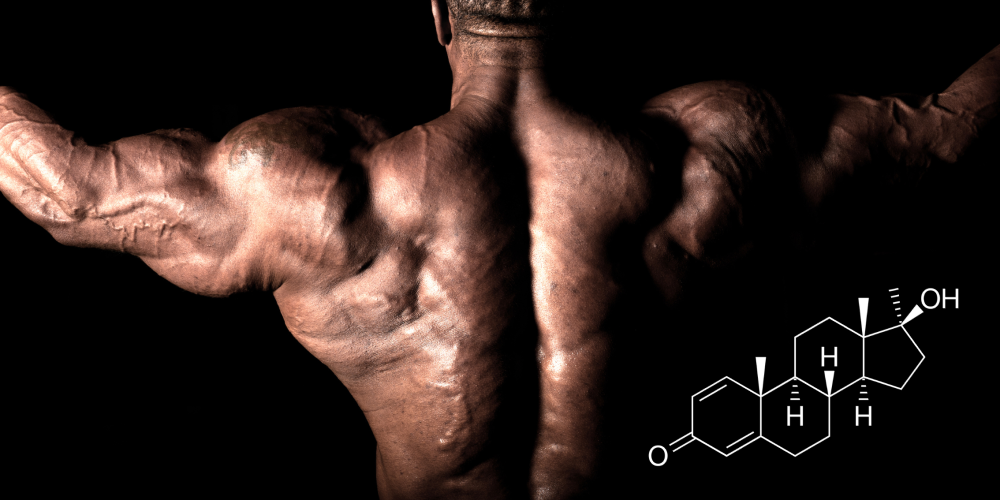Training techniques for the advanced
Are you looking to take your workout routine to the next level? If so, you may be interested in incorporating advanced training techniques into your workouts. These techniques are designed to push your body to new limits and help you achieve your fitness goals faster.
However, it’s important to remember that advanced training techniques should be approached with caution. These methods can be effective, but they can also be risky if not executed properly. It’s crucial to have a solid foundation of basic exercises and proper form before attempting more complex moves.
In this article, we will explore some of the most popular advanced training techniques, including Blood Flow Restriction (BFR) training, Blood lactate threshold training, and Pre-exhaustion training, just to name a few. We’ll discuss the benefits of each technique, how to properly perform them, and what to watch out for to avoid injury.
- Blood flow restriction training (BFR): Using bands or cuffs to partially restrict or occlude blood flow to a muscle during exercise to enhance muscle growth and strength.
Blood flow restriction training (BFR) is a relatively new and innovative training technique that has become increasingly popular in recent years in fitness and sports performance circles. BFR involves using a tourniquet or specialized cuffs to partially restrict blood flow to the muscles during exercise.
The goal of BFR is to reduce the amount of oxygen that reaches the muscle tissue while still allowing for enough blood flow to sustain the muscle. This generates an environment in the muscle that closely mimics high-intensity exercise and high altitude training, which is believed to stimulate muscle growth and improve strength.
BFR is particularly effective when used with low-intensity workouts, such as walking or light resistance training, and is also useful for rehabilitating injuries or for those who have suffered recent muscle strains. Athletes who use BFR can see significant muscle growth after just a few weeks of dedicated training, which can translate to improved performance in sports such as weightlifting, bodybuilding, and endurance events.
Despite its potential benefits, BFR should only be done under the guidance of an experienced fitness professional or medical professional. It should not be attempted without proper instruction and supervision, as improperly performed BFR can lead to serious injury.
Here are some examples of how BFR training can be incorporated into a workout routine:
- BFR training for muscle growth: One way to use BFR training is to perform 3-4 sets of a compound exercise (such as squats or bench press) with a lighter weight and higher reps, while wearing BFR cuffs around the upper arms or thighs. The pressure of the cuffs should be around 50-80% of arterial occlusion pressure. This technique can increase muscle activation and metabolic stress, leading to greater muscle growth.
- BFR training for injury rehabilitation: BFR training can be useful for individuals who are recovering from an injury and are unable to lift heavy weights. For example, someone with a knee injury could perform BFR leg extensions with a light weight and high reps, while wearing cuffs around the upper thigh. This can help to maintain muscle mass and strength, while reducing the risk of further injury.
- BFR training for endurance: BFR training can also be used to improve endurance. For example, an athlete could perform BFR cycling intervals, using a stationary bike with the cuffs around the upper thighs. The pressure of the cuffs should be around 80-100% of arterial occlusion pressure, and the intervals should be short (30-60 seconds) with high intensity. This can help to improve the body’s ability to use oxygen during exercise and delay fatigue.
It’s important to note that BFR training should be used as part of a comprehensive workout routine, and should not be the only form of exercise performed. Additionally, individuals with certain medical conditions (such as high blood pressure or deep vein thrombosis) should not perform BFR training without consulting a healthcare provider first.
- Unilateral training: Training one limb or one side of the body at a time to correct muscle imbalances and improve core stability.
Unilateral training involves performing exercises that work one side of the body at a time, rather than both sides simultaneously. This type of training can help to correct muscle imbalances, improve stability and coordination, and increase overall strength and power.
Examples of unilateral exercises include single-leg squats, lunges, step-ups, single-arm presses, and single-arm rows. These exercises require the body to work harder to maintain stability and balance, which can lead to greater activation of the core and other stabilizing muscles.
Unilateral training can be especially beneficial for athletes who rely on unilateral movements in their sport, such as runners, jumpers, and tennis players. It can also be helpful for individuals recovering from an injury, as it can help to improve strength and stability in the injured limb.
One common misconception about unilateral training is that it requires a lot of equipment or a gym membership. However, many unilateral exercises can be done using just bodyweight or minimal equipment, making them accessible for anyone to incorporate into their workout routine.
When incorporating unilateral training into your workout routine, it’s important to start with lighter weights or bodyweight exercises and focus on proper form and technique. As you progress, you can gradually increase the weight and intensity of the exercises.
It can be an effective way to correct muscle imbalances, improve stability and coordination, and increase overall strength and power. Incorporating unilateral exercises into your workout routine can help you achieve a more well-rounded and balanced physique while also improving your performance in everyday activities and sports.
Here are some examples of unilateral exercises:
- Bulgarian split squat: Stand facing away from a bench or step with one foot on the bench behind you. Lower your back knee down toward the ground, keeping your front knee in line with your ankle. Push through your front foot to return to the starting position. Complete all reps on one side before switching to the other.
- Single-leg deadlift: Hold a dumbbell in one hand and balance on one foot. Keeping your back flat and core engaged, hinge at the hips and lower the weight toward the ground, lifting your opposite leg behind you for balance. Return to standing and repeat all reps on one side before switching to the other.
- Single-arm row: Hold a dumbbell in one hand and hinge forward from the hips, keeping your back flat and core engaged. With the weight in your hand, pull your elbow up and back, squeezing your shoulder blade. Lower the weight and repeat all reps on one side before switching to the other.
- Pistol squat: Stand on one leg with your other leg extended in front of you. Lower down into a squat, keeping your chest up and your knee in line with your ankle. Push back up to standing and repeat all reps on one side before switching to the other.
- Single-arm overhead press: Hold a dumbbell in one hand at shoulder height, with your palm facing forward. Press the weight up overhead, keeping your core engaged and your opposite arm out to the side for balance. Lower the weight and repeat all reps on one side before switching to the other.
Incorporating these exercises into your routine can help to improve strength and stability on each side of the body, which can have numerous benefits for overall health and fitness.
- Drop sets: Decreasing the weight on the bar or machine after reaching failure on an exercise to continue the set and induce muscle fatigue for hypertrophy.
- Barbell Bicep Curls: Start with a weight that you can perform 8-10 reps with, then immediately drop the weight by 20-30% and continue performing reps until failure. Repeat this process for a total of 3-4 sets.
- Dumbbell Chest Press: Start with a weight that you can perform 8-10 reps with, then immediately drop the weight by 20-30% and continue performing reps until failure. Repeat this process for a total of 3-4 sets.
- Seated Cable Rows: Start with a weight that you can perform 8-10 reps with, then immediately drop the weight by 20-30% and continue performing reps until failure. Repeat this process for a total of 3-4 sets.
- Leg Extensions: Start with a weight that you can perform 12-15 reps with, then immediately drop the weight by 20-30% and continue performing reps until failure. Repeat this process for a total of 3-4 sets.
- Standing Dumbbell Shoulder Press: Start with a weight that you can perform 8-10 reps with, then immediately drop the weight by 20-30% and continue performing reps until failure. Repeat this process for a total of 3-4 sets.
Remember to rest for 60-90 seconds between each drop set, and always use proper form to prevent injury. Drop sets can be an effective way to induce muscle fatigue and stimulate hypertrophy, but they should be used in moderation and as part of a well-rounded training program.
- Rest-pause training: Performing a set to failure, taking a brief rest, and continuing the set to further fatigue the muscle and improve endurance.
If you’re looking for a way to spice up your workouts, increase your stamina and power, and get more results in less time, you’ll love rest-pause training. It’s a simple but awesome technique that makes your muscles work harder and longer by taking short breaks between mini-sets.
How to Do Rest-Pause Training
You can do rest-pause training with any exercise that lets you pause safely and easily by putting down or holding the weight(s). For example, you can use barbells, dumbbells, machines, or cables for this technique.
Here’s how it works:
- Pick a weight that you can lift for 8 to 12 reps with good form.
- Do as many reps as you can until you feel like you can’t do any more or your form starts to slip.
- Take a quick 10 to 15 second break by putting down the weight or holding it in a comfy position.
- Do as many reps as you can again with the same weight until you feel the same way as before.
- Take another 10 to 15 second break and repeat the process one more time.
That’s one rest-pause set. You can do one to three rest-pause sets per exercise, depending on your goals and fitness level. You can also change the number of mini-sets, the break times, and the rep ranges to make it more fun and challenging.
Benefits of Rest-Pause Training
Rest-pause training has a lot of benefits for your fitness and performance, such as:
- Making your muscles stronger by working more muscle fibers and nerve cells.
- Making your muscles bigger by creating more stress and damage in your muscles.
- Making your muscles last longer by forcing them to deal with more tension and fatigue.
- Saving you time by cutting down the total number of sets and cranking up the intensity of each set.
- Helping you break through plateaus by pushing past your normal rep range and surprising your muscles with something new.
Examples of Rest-Pause Training
Here are some examples of how you can use rest-pause training in your workouts:
- Chest: Barbell bench press – 3 rest-pause sets of 8-12 reps (break for 15 seconds between mini-sets)
- Back: Lat pulldown – 3 rest-pause sets of 8-12 reps (break for 15 seconds between mini-sets)
- Shoulders: Dumbbell shoulder press – 2 rest-pause sets of 10-15 reps (break for 10 seconds between mini-sets)
- Arms: Barbell curl – 2 rest-pause sets of 10-15 reps (break for 10 seconds between mini-sets)
- Legs: Barbell squat – 3 rest-pause sets of 6-10 reps (break for 15 seconds between mini-sets)
Rest-pause training is a simple but awesome technique that can help you improve your stamina and power, build more muscle, save time, and break through plateaus. It involves doing a set to failure, taking a short break, and continuing the set to make your muscles work harder and longer. You can do rest-pause training with any exercise that lets you pause safely and easily by putting down or holding the weight(s). You can also change the number of mini-sets, the break times, and the rep ranges to make it more fun and challenging. Give rest-pause training a try in your next workout and see how it works for you.
- Pre-exhaustion training: Doing isolation exercises before compound exercises to fatigue the targeted muscles for a more effective workout.
Pre-exhaustion training is a technique that can make your workouts more effective and get more out of every exercise. It can help you target your muscles better and make sure they get fully worked. It involves doing isolation exercises before compound exercises to fatigue the targeted muscles.
You can do pre-exhaustion training with any exercise that lets you pause safely and easily by putting down or holding the weight(s). For example, you can use dumbbells, machines, cables, or bands for this technique.
Here’s how it works:
- Pick an isolation exercise that works only one muscle group. For example, leg extensions for your quads, lateral raises for your shoulders, or cable curls for your biceps.
- Do as many reps as you can with good form until you feel your muscle burning and tired.
- Take a short break of 10 to 15 seconds by putting down the weight or holding it in a relaxed position.
- Pick a compound exercise that works the same muscle group along with others. For example, squats for your quads, glutes, and hamstrings, overhead presses for your shoulders, triceps, and upper back, or chin-ups for your biceps, back, and forearms.
- Do as many reps as you can with good form until you feel your muscle giving out.
That’s one pre-exhaustion set. You can do one to three pre-exhaustion sets per muscle group, depending on your goals and fitness level. You can also change the number of mini-sets, the break times, and the rep ranges to make it more fun and challenging.
Benefits of Pre-Exhaustion Training
Pre-exhaustion training has a lot of benefits for your fitness and performance, such as:
- Making your muscles work harder and longer by fatiguing them before doing compound exercises.
- Making your muscles grow bigger and stronger by creating more stress and damage in them.
- Making your workouts more efficient and time-saving by doing fewer sets and increasing the intensity of each set.
- Helping you break through plateaus by changing up your routine and surprising your muscles with something new.
Examples of Pre-Exhaustion Training
Here are some examples of how you can use pre-exhaustion training in your workouts:
- Chest: Cable crossover – 2 pre-exhaustion sets of 12-15 reps (break for 10 seconds between mini-sets), followed by bench press – 2 sets of 8-10 reps
- Back: Straight-arm pulldown – 2 pre-exhaustion sets of 12-15 reps (break for 10 seconds between mini-sets), followed by bent-over row – 2 sets of 8-10 reps
- Shoulders: Front raise – 2 pre-exhaustion sets of 12-15 reps (break for 10 seconds between mini-sets), followed by dumbbell press – 2 sets of 8-10 reps
- Arms: Triceps pushdown – 2 pre-exhaustion sets of 12-15 reps (break for 10 seconds between mini-sets), followed by close-grip bench press – 2 sets of 8-10 reps
- Legs: Leg curl – 2 pre-exhaustion sets of 12-15 reps (break for 10 seconds between mini-sets), followed by deadlift – 2 sets of 8-10 reps
Pre-exhaustion training is a smart way to train your muscles by doing isolation exercises before compound exercises. It makes your muscles work harder and longer, grow bigger and stronger, and break through plateaus. You can do pre-exhaustion training with any exercise that lets you pause safely and easily by putting down or holding the weight(s). You can also change the number of mini-sets, the break times, and the rep ranges to make it more fun and challenging. Try pre-exhaustion training in your next workout and see how it works for you.
- Blood lactate threshold training: Training at or near the maximum amount of lactate produced by the muscles to improve endurance and increase the body’s ability to clear lactic acid.
If you’ve ever felt your muscles burning during a hard workout, you’ve experienced the effects of lactic acid. Lactic acid is a substance that your body produces when it breaks down glucose for energy without enough oxygen. It can cause fatigue and discomfort, and limit your performance.
But there’s a way to train your body to deal with lactic acid better and improve your endurance. It’s called blood lactate threshold training, and it involves training at or near the maximum amount of lactate produced by your muscles.
What is Blood Lactate Threshold?
Your blood lactate threshold (BLT) is the point at which your muscles produce more lactic acid than your body can remove. When this happens, lactic acid accumulates in your blood and lowers its pH, making it more acidic. This can interfere with your muscle contractions and cause you to slow down or stop.
Your BLT is usually expressed as a percentage of your maximum heart rate (HRmax) or maximum oxygen uptake (VO2max). For example, if your BLT is 80% of your HRmax, it means that you can exercise at 80% of your HRmax without accumulating too much lactic acid.
It is influenced by many factors, such as your genetics, fitness level, training history, and nutrition. Generally, the higher your BLT, the better your endurance and performance. Research indicates that BLT is the greatest performance indicator for endurance activities.
What is Blood Lactate Threshold Training?
Blood lactate threshold training (BLTT) is a type of training that aims to increase your BLT by exposing your body to high levels of lactic acid. By doing this, you can improve your body’s ability to clear lactic acid and delay fatigue.
BLTT can be done with interval training or steady-state work at or near your BLT pace. For example, you can do:
- Interval training: Repeated bouts of high-intensity exercise (e.g., 3 to 5 minutes) followed by recovery periods (e.g., 1 to 2 minutes). The intensity should be close to or slightly above your BLT.
- Steady-state work: Continuous exercise at a moderate-to-high intensity (e.g., 20 to 30 minutes). The intensity should be close to or slightly below your BLT.
Benefits of Blood Lactate Threshold Training
BLTT has many benefits for your fitness and performance, such as:
- Improving your endurance by increasing your BLT and allowing you to exercise longer and harder without accumulating too much lactic acid.
- Improving your speed by increasing your VO2max and enhancing your aerobic capacity.
- Improving your efficiency by improving your muscle fiber recruitment and reducing your oxygen cost.
- Improving your recovery by improving your blood flow and removing waste products from your muscles.
Examples of Blood Lactate Threshold Training
Here are some examples of how you can do BLTT in your workouts:
- Running: 4 x 5 minutes at 85% HRmax with 2 minutes recovery jog between intervals
- Cycling: 20 minutes at 80% HRmax
- Swimming: 8 x 100 meters at 90% HRmax with 30 seconds rest between intervals
Blood lactate threshold training is a powerful way to improve your endurance and clear lactic acid. It involves training at or near the maximum amount of lactate produced by your muscles. You can do BLTT with interval training or steady-state work at or near your BLT pace. By doing this, you can improve your body’s ability to clear lactic acid and delay fatigue. You can also improve your speed, efficiency, and recovery. Try BLTT in your next workout and see how it works for you.
In conclusion, advanced training techniques can be an effective way to take your fitness routine to the next level and achieve your goals faster. However, it’s important to approach these methods with caution and ensure you have a solid foundation of basic exercises and proper form. Always listen to your body and consult with a qualified trainer or healthcare professional before incorporating any advanced techniques into your workouts. With proper execution and caution, advanced training techniques can help you reach new heights in your fitness journey.









